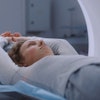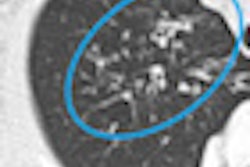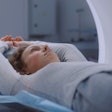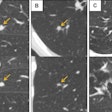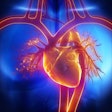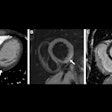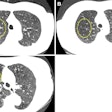Patients with cystic fibrosis (CF) receive substantial radiation doses from medical imaging, especially CT, highlighting the need for careful management of radiation exposure in patients with chronic diseases, according to a new study in Chest that covers nearly two decades.
The 17-year Irish study of more than 200 patients showed that more than one-fourth had cumulative effective doses (CEDs) of more than 10 mSv, a level that has been predicted to produce an average of one additional radiation-induced malignancy per 1,000 patients. One patient even logged a CED exceeding 75 mSv, while several others had CEDs approaching 50 mSv.
Perhaps more troubling, the exposure rate grew over the study period, possibly due to the routine use of CT in cystic fibrosis research and management, wrote Dr. O.J. O'Connell and colleagues from Cork University Hospital of University College Cork. Even so, they noted, the facility has yet to adopt the routine surveillance chest CT scans that are increasingly common in CF care, so the results are likely to understate radiation exposures levels for many patients (Chest, December 29, 2011).
"With the increasing life expectancy for patients with cystic fibrosis, and a known predisposition to certain cancers, cumulative radiation exposure from radiological imaging is of increasing significance," O'Connell and colleagues wrote.
The study examined the estimated cumulative effective radiation doses over a 17-year period from radiological procedures at a nationally known CF center, as well as changing trends of imaging modalities over the same period. Although this is the first large study to track radiation doses in CF patients, other chronic conditions have received scrutiny, the authors noted.
"Previous studies have proposed that additional caution is required in patient subgroups (e.g., Crohn's disease patients) who because of their chronic relapsing illnesses require repeated diagnostic imaging throughout their lifetime and who already have an increased lifetime risk of developing cancer may suffer as a result of possible synergy between these two factors, resulting in an ever higher incidence of developing cancer," they wrote.
CF patients benefit in several ways from CT exams, which can detect lung changes from early infancy and before they manifest in pulmonary function tests. Clinical trials are increasingly using thoracic CT scores as surrogate end points in studies, and some centers use high-resolution CT for the routine monitoring of disease progression in pediatric CF patients.
The researchers estimated CED from all thoracic and extrathoracic imaging exams and interventional radiology procedures for adult and pediatric CF patients who attended a nationally designated CF center for at least a year. The study period was divided into three equal tertiles, and CED attributable to all radiological procedures was estimated for each tertile.
CED estimates over the study period were as follows:
- > 75 mSv -- 1 patient (0.43%)
- 20-75 mSv -- 36 patients (15.6%)
- 5-20 mSv -- 56 patients (24.3%)
- 0-5 mSv -- 138 patients (60%)
The mean annual CED per patient increased consecutively from 0.39 to 0.47 to 1.67 mSv per year over the first, second, and third tertiles, respectively, of the study period (p < 0.001). Thoracic imaging accounted for 46.9% of the total CED and abdominopelvic imaging accounted for 42.9%.
Surging utilization
Over the study period, there was a 5.9-fold increase in the use of all CT scanning per patient (p < 0.001), while the use of other imaging modalities remained stable. Although controversial, risk estimates have predicted an exposure of 10 mSv of radiation dose to result in an average of one radiation-induced malignancy per 1,000 patients. Extrathoracic imaging accounted for nearly half of all radiation exposure.
A dose of 1.67 mSv per year may appear relatively modest, given the background environmental radiation exposure of 3.9 mSv per year in Ireland, O'Connell and colleagues wrote.
"However, this represents a significant exposure for such a young cohort of patients, made all the more pertinent given the progressive increased life expectancy for these patients with improved management of cystic fibrosis," they wrote.
Plain radiographs accounted for 74% of all studies but only 6% of radiation exposure in the third tertile. During the same period, CT accounted for only 8% of the total number of studies but 74.8% of all radiation exposure.
Because CF is a multiorgan disease that often requires extrathoracic imaging, scans aren't limited to the chest, the authors noted. In the study population, 42.7% of radiological imaging occurred in the abdominopelvic region, which corresponds to reports of an elevated risk of digestive tract and other malignancies in CF patients. These malignancy risks are likely multifactorial and associated with chronic pancreatitis, low serum vitamin D levels, and increased frequency of lung transplantation, as well as high abdominopelvic radiation exposure levels.
Lowering exposure
Despite CT's many benefits, its use may go too far, and doses may be too high in many centers, according to the authors. They offered several steps they say could reduce radiation exposure in CF patients:
- Adjust CT protocols for lower doses, as CF patients typically have a smaller body habitus. For example, reducing the mAs from 180 to 45 for a conventional thoracic high-resolution CT scan can reduce radiation exposure fourfold without significantly affecting image quality.
- Limit scan length: More than 97% of CT thorax scans have significant supra-apical and infrapulmonary imaging, resulting in increased exposure for the thyroid and abdominal regions.
- Use automatic tube current modulation, iterative reconstruction techniques, and noise reduction filters.
- Pay close attention to the information gained from each imaging request to ensure that the examination is indicated and can't be replaced by a modality that does not expose the patient to radiation (e.g., ultrasound or MRI).
- Limit exposure to extrathoracic organs, including the development of low-dose abdominopelvic CT protocols.
Surveillance scans are also probably unnecessary, the authors added. Current guidelines suggest there is insufficient evidence to recommend chest CT scans for routine surveillance, but they may be helpful for infants with symptoms or signs of lung disease who fail to respond to basic intervention.
Study limitations include its retrospective design and its limitation to a single center. In addition, technology now allows lower typical radiation exposures than were common when the study began, although in practice they are still often higher, according to the group.
"With technological advances it has been suggested that a reduction in radiation exposure of over 75% can be safely achieved using more modern low-dose CT thorax protocols; however, this may be offset with the increasing use of spiral CT scanning and potentially by the recent suggestions to monitor disease progression using combined PET/CT imaging," they wrote.
"Patients with CF are exposed to high radiation doses from a young age, exacerbated by the increasing use in CT imaging," O'Connell and colleagues concluded. "Strategies need to be developed and implemented with regard to radiation exposure reduction for both thoracic and extrathoracic imaging in this cohort of patients."


